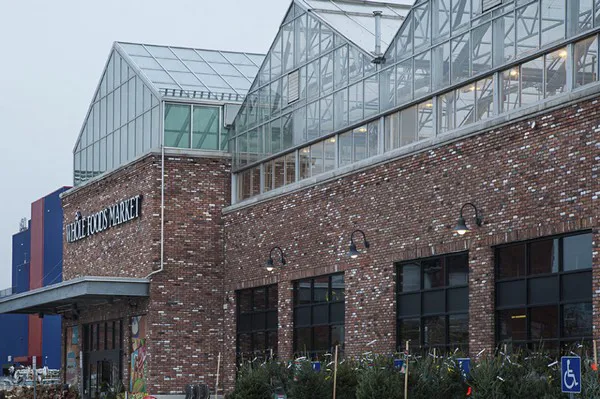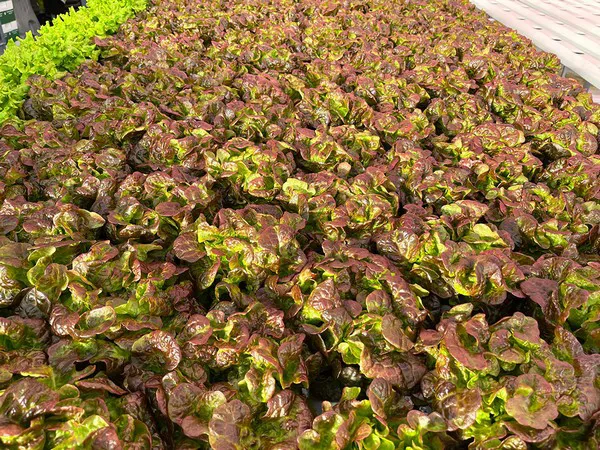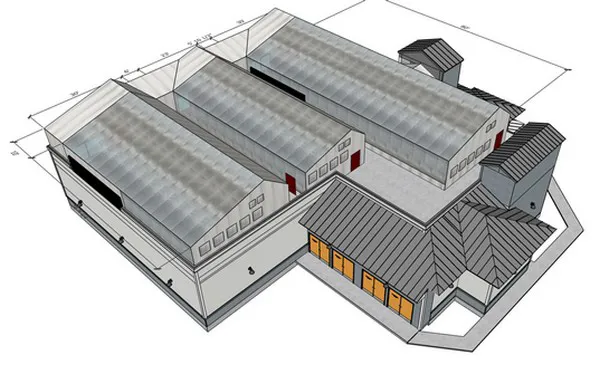Rooftop greenhouses are changing the way we think about urban and other densely populated areas. We are seeing cities redefine themselves by supporting and implementing alternative methods of agriculture to bring people closer to their food. This movement started with small community farms in empty lots and rooftop gardens or "green roofs" sprouting on the tops of buildings and has evolved into the construction of large-scale rooftop greenhouses that are more successful in reducing food miles by producing local food for urban communities year-round.
When food production comes to the city, we change the perspective from food being something that is purchased at the supermarket to something that is grown. We create awareness that food is life-giving instead of just another good we purchase.
Common placements for rooftop greenhouses include the tops of restaurants, grocery stores, apartment buildings, hospitals, warehouses, and more. In this article, Ceres Greenhouse Solutions will go over all the rooftop greenhouse benefits and applications and explain how Ceres fits into this growing trend.
Advantages of rooftop greenhouses
- Creating local food systems
- Energy savings for the structure underneath
- Water savings by collecting and using rainwater
- Improved air quality in cities
- Land savings
- Transportation savings – fewer food miles
- Increased property value for all properties around the greenhouse
- Reduced heat island effect
- Helping to create and sustain a local (food) community
- Increased food quality – year round
Creating local food systems
In 2020 Lufa Farms opened up what was then considered the world's largest rooftop greenhouse on top of a warehouse facility in Montreal, Canada. In an article by Agritecture, it was reported that this farm harvested enough vegetables each week to feed 20,000 nearby families, at an affordable price. While this seems like a very small portion of the city's population, it still demonstrates that this type of food production is possible and adequately supplements traditional forms of agriculture.
Bringing greenhouses into cities brings people closer to their food, which allows them access to fresh produce and increased knowledge about how their food is grown. Rooftop greenhouses build local food systems, which improve the health of our communities and decrease our dependence on imported produce. 
Image from shutterstock.com by NDAB Creativity
Energy savings
Paying for energy to heat or cool commercial buildings in the city is not cheap. A rooftop greenhouse can help offset heating bills and cooling costs. On a sunny day in the winter, a greenhouse can heat the building below, and in the summer, a greenhouse can cool the building below. A rooftop greenhouse inherently makes whatever building it's on more energy efficient.
Water savings
Urban areas can experience a lot of water runoff during heavy rainstorms, which in turn need to be treated in wastewater treatment plants. Rooftop greenhouses can collect and store rainwater. This water can be used to irrigate plants and can also be used as gray water in bathrooms and building utilities.
Image from shutterstock.com by Ulf Wittrock
Improved air quality
A greenhouse full of plants creates large amounts of oxygen that is released into the surrounding air, thereby greatly improving air quality. In addition, greenhouse air is filtered, removing particulate matter (dust). If a greenhouse is built on top of a grocery store, restaurant, hospital, or any space that accommodates a lot of human activity, clean and highly oxygenated air from the greenhouse can be filtered back into the building to make the space more pleasant and habitable.
Land savings
Another urban ag farm, Gotham Greens, built its first hydroponic greenhouse on top of a Whole Foods in New York City after getting priced out from the NYC real estate market. Putting a greenhouse on top of a pre-existing building and a grocery store at that helped with their business viability in more ways than one. The greenhouse provides fresh greens year-round to the Whole Foods and other local restaurants in the area. Rooftop greenhouses are a great solution to limited land availability and rising real estate prices that are a common occurrence in cities.
Another great example of a successful space-saving and highly beneficial greenhouse structure is Rewe Market in Wiesbaden, Germany. The rooftop aquaponics greenhouse will supply the region with fresh greens and fish. This highly sustainable 25,000 sq ft (2500m2) supermarket, including the rooftop greenhouse, was built within one year and captured 700 tons of CO2 within its structure. 
Image from shutterstock.com by Ana Iacob photography
Transportation cost savings and decreased food miles
More than 90% of the lettuce produced in the US is grown in California and Arizona. That means for someone living in New York City, their salad greens are traveling thousands of miles before they buy them at the grocery store. This is the case in Europe too, with 70% of the region's lettuce grown in Spain. A rooftop greenhouse lessens food miles (the distance from farm to grocery store or restaurant), which reduces the environmental and economic cost of food transportation. 
Increased property value
A rooftop greenhouse that provides food for the community is seen as a valuable asset and can increase property value in the local area. This can be especially beneficial for neighborhoods that are economically disadvantaged, as the introduction of a rooftop greenhouse can increase community engagement, job opportunities, local food production, and, eventually, home ownership. In short, greenhouses help to create community.
The Ceres solution
"At Ceres, our main goal is to create energy-efficient growing spaces for any and all applications. We recognize that the future of farming will see more CEA facilities closer to population centers. Designing rooftop greenhouses is our way of acknowledging this shift in the industry and bringing our innovation to urban areas. Our standard greenhouse kits can be designed to fit on rooftops, empty lots, or any urban space. Ceres also partners with a European manufacturer, Rabensteiner, to provide custom glass greenhouse solutions engineered specifically for rooftop spaces," Ceres says.
For more information:
Ceres Greenhouse Solutions
www.ceresgs.com
